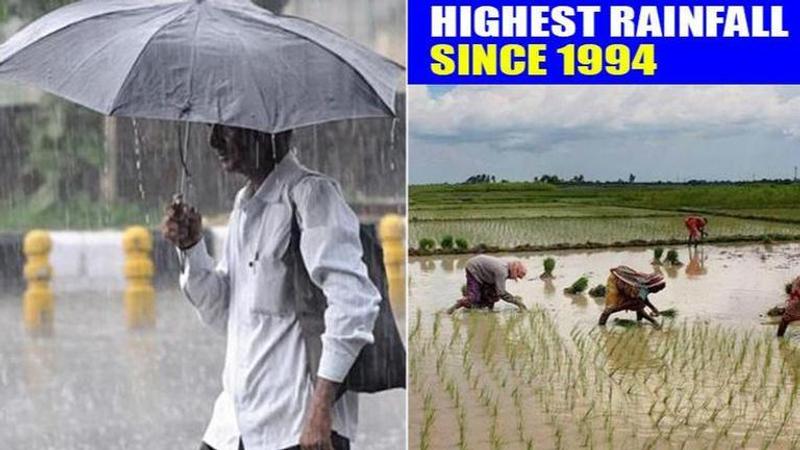Published 20:59 IST, October 7th 2019
Why the biggest monsoon since 1994 may prove good for India till 2020
As the Southwest monsoon season in India draws to a close, the prolonged rains triggered due to climate change may have a silver lining, according to experts

As the Southwest monsoon season in India draws to a close, the prolonged rains triggered due to climate change may have a silver lining. As explained by Skymet, 2019 has been an El Niño year, due to which there has been large-scale ocean-atmosphere climate interaction due to global warming. As predicted by Skymet, this year witnessed a strong El Niño with rainfall at 102% of the Long-period average (LPA). According to Indian Meteorological Department (IMD) reports India recorded the highest rainfall since 1994.
Why was monsoon so intense in India?
The main reason for the bountiful rainfall India has received this year because of what weather bureaus like Skymet and IMD have stated - the El Niño effect. The El Niño as explained by US National Oceanic and Atmospheric Administration is a large-scale ocean-atmosphere climate interaction linked to periodic warming in sea surface temperatures across the central and east-central Equatorial Pacific.
Skymet had initially predicted in April that a 'weak' El Niño would persist, resulting monsoon to be below normal at 93% LPA. But as the months progressed, amidst an ongoing El Niño, monsoon gained speed and reaching its peak in July-August period and steadily rising at the end of September. While there were acute droughts Maharashtra, Gujarat, Karnataka, Andhra Pradesh, Telangana, and Tamil Nadu in summer- especially in May 2019, a strong El-Nino saw a steady rise in monsoon in the consecutive months.
How does this excessive rainfall help India?
Skymet had assessed that September to be the best month of this monsoon at 102% LPA, but in reality, it has been 153% which is the highest since 1917. According to experts, this monsoon's biggest advantage was its even distribution throughout the nation, especially in Central India. According to Skymet reports, monsoon has been plentiful in drought-struck states like Gujarat, Maharashtra and Madhya Pradesh in particular. Recent dam levels released by Centre also indicate that 113 major reservoirs are at nearly 87% of their live storage capacities, which indicates a good start for the crop year.
According to experts, the excessive rain in September will help in the accumulation of residual moisture in the soil prior to the Rabi crop season which begins in October. This monsoon also reportedly helps in replenishing the water table and the groundwater levels. Experts claim that this may help India see through the next summer till the next monsoon. While none of the experts captured that India would be receiving the highest rainfall since 1994, they do feel that it is a good start to the year.
How heavy was 2019 monsoon?
According to Skymet, initially in June India faced a deficiency of 33% in June and it seemed that it was impossible to recover from such a deficiency. But in the following months in July, August and September monsoon with the season-ending with a surplus 10%, according to Skymet. Historically, over this century, Skymet claims that here have been five droughts (2002, 2004, 2009, 2014 and 2015) and five below-normal years (2000, 2001, 2012, 2017 and 2018). But in comparison to the last five years alone, rainfall has improved with 2019 being the only surplus rainfall year. This is also the first year where the Modi government has seen good rainfall.
Updated 21:17 IST, October 7th 2019




